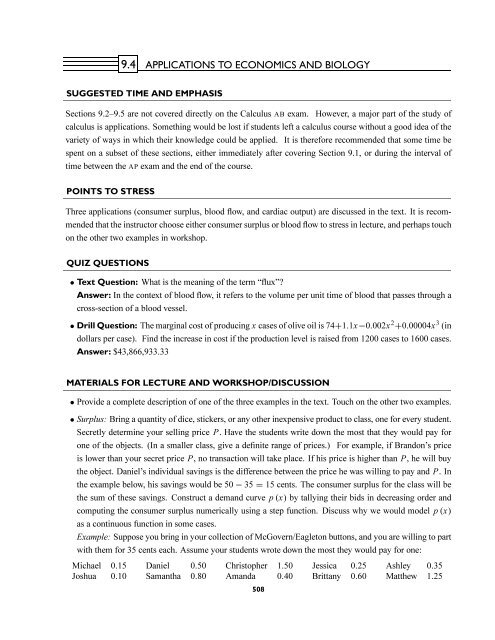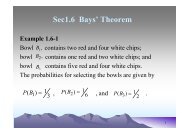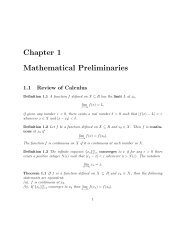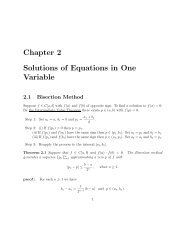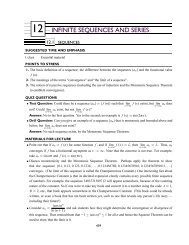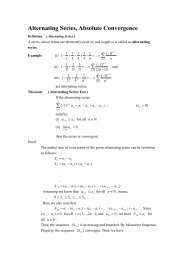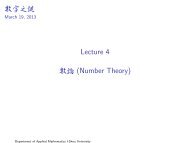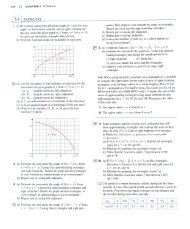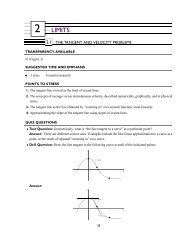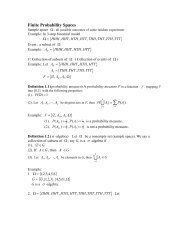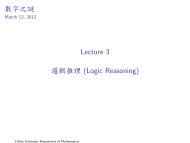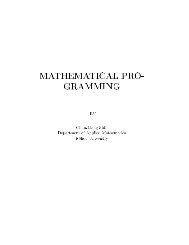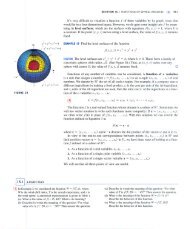9 FURTHER APPLICATIONS OF INTEGRATION
9 FURTHER APPLICATIONS OF INTEGRATION
9 FURTHER APPLICATIONS OF INTEGRATION
Create successful ePaper yourself
Turn your PDF publications into a flip-book with our unique Google optimized e-Paper software.
9.4 <strong>APPLICATIONS</strong> TO ECONOMICS AND BIOLOGY<br />
SUGGESTED TIME AND EMPHASIS<br />
Sections 9.2–9.5 are not covered directly on the Calculus AB exam. However, a major part of the study of<br />
calculus is applications. Something would be lost if students left a calculus course without a good idea of the<br />
variety of ways in which their knowledge could be applied. It is therefore recommended that some time be<br />
spent on a subset of these sections, either immediately after covering Section 9.1, or during the interval of<br />
time between the AP exam and the end of the course.<br />
POINTS TO STRESS<br />
Three applications (consumer surplus, blood flow, and cardiac output) are discussed in the text. It is recommended<br />
that the instructor choose either consumer surplus or blood flow to stress in lecture, and perhaps touch<br />
on the other two examples in workshop.<br />
QUIZ QUESTIONS<br />
• Text Question: What is the meaning of the term “flux”?<br />
Answer: In the context of blood flow, it refers to the volume per unit time of blood that passes through a<br />
cross-section of a blood vessel.<br />
• Drill Question: The marginal cost of producing x cases of olive oil is 74+1.1x−0.002x 2 +0.00004x 3 (in<br />
dollars per case). Find the increase in cost if the production level is raised from 1200 cases to 1600 cases.<br />
Answer: $43,866,933.33<br />
MATERIALS FOR LECTURE AND WORKSHOP/DISCUSSION<br />
• Provide a complete description of one of the three examples in the text. Touch on the other two examples.<br />
• Surplus: Bring a quantity of dice, stickers, or any other inexpensive product to class, one for every student.<br />
Secretly determine your selling price P. Have the students write down the most that they would pay for<br />
one of the objects. (In a smaller class, give a definite range of prices.) For example, if Brandon’s price<br />
is lower than your secret price P, no transaction will take place. If his price is higher than P, hewillbuy<br />
the object. Daniel’s individual savings is the difference between the price he was willing to pay and P. In<br />
the example below, his savings would be 50 − 35 = 15 cents. The consumer surplus for the class will be<br />
the sum of these savings. Construct a demand curve p (x) by tallying their bids in decreasing order and<br />
computing the consumer surplus numerically using a step function. Discuss why we would model p (x)<br />
as a continuous function in some cases.<br />
Example: Suppose you bring in your collection of McGovern/Eagleton buttons, and you are willing to part<br />
with them for 35 cents each. Assume your students wrote down the most they would pay for one:<br />
Michael 0.15 Daniel 0.50 Christopher 1.50 Jessica 0.25 Ashley 0.35<br />
Joshua 0.10 Samantha 0.80 Amanda 0.40 Brittany 0.60 Matthew 1.25<br />
508


